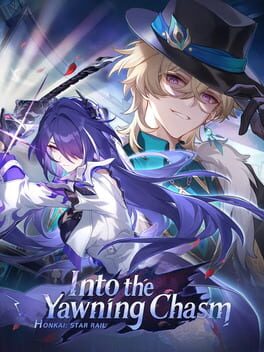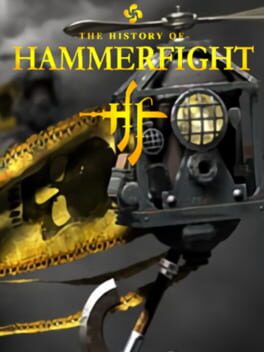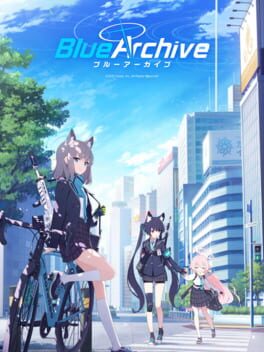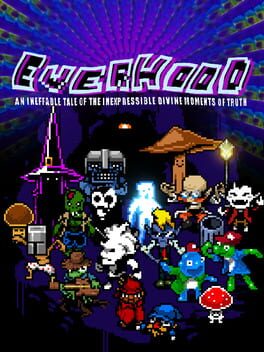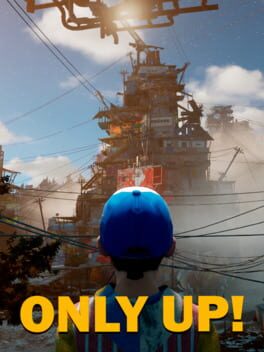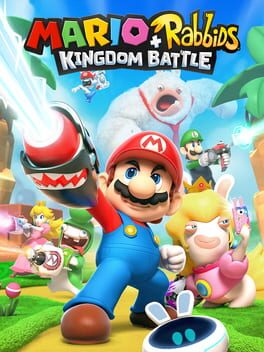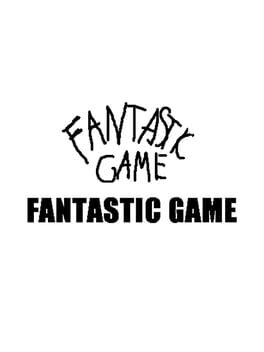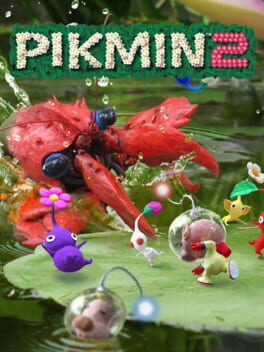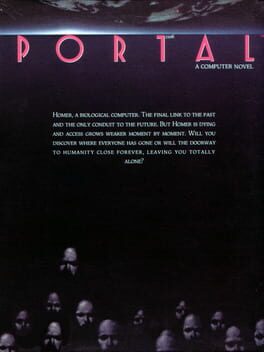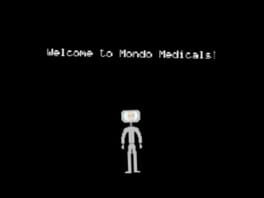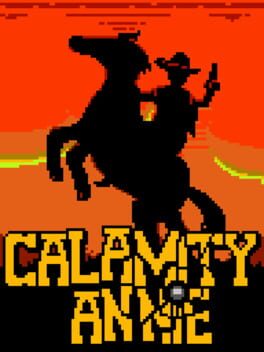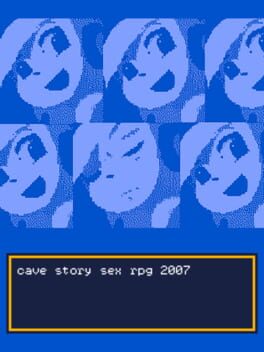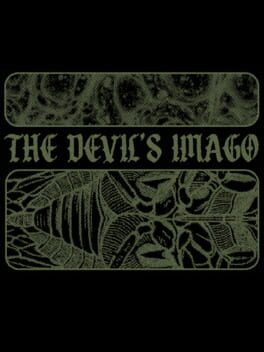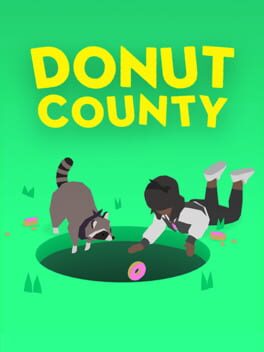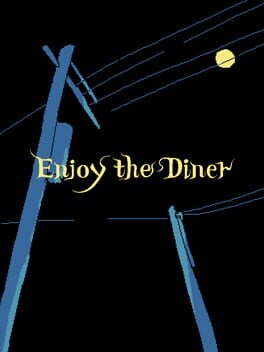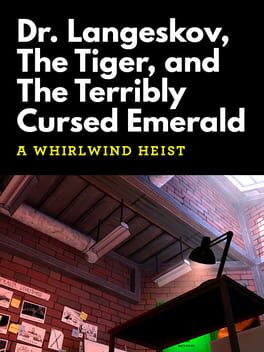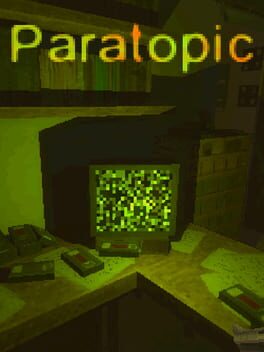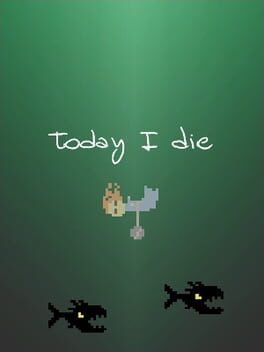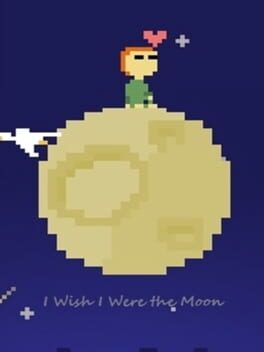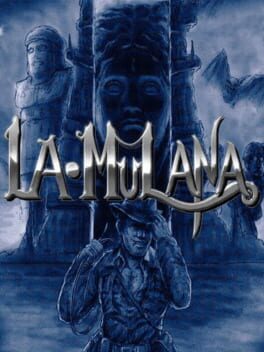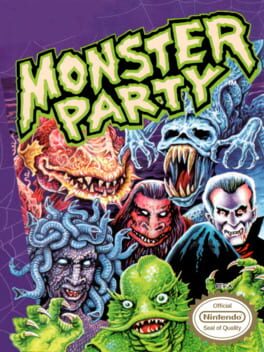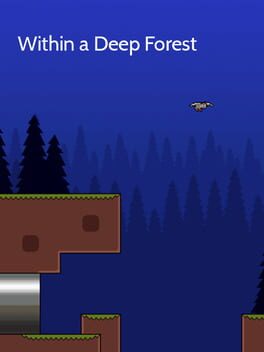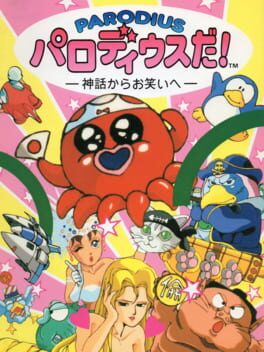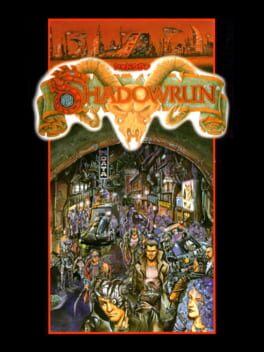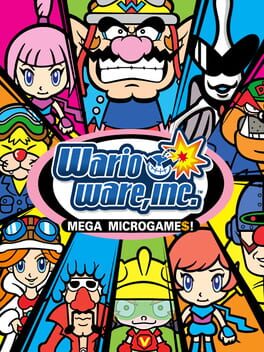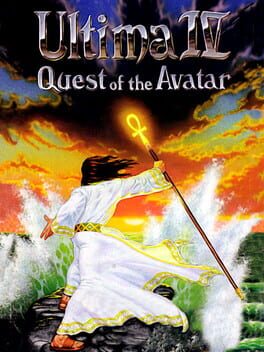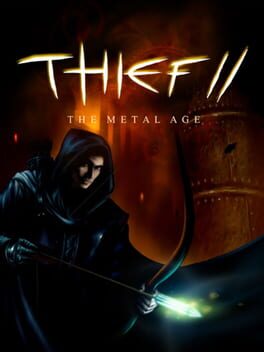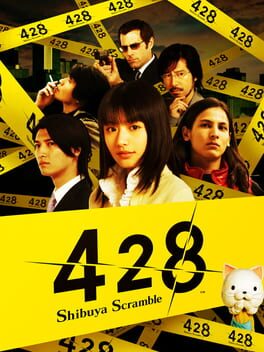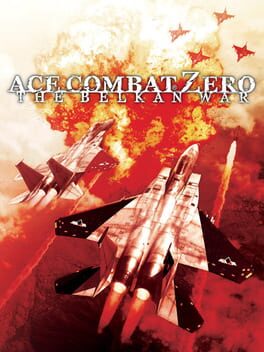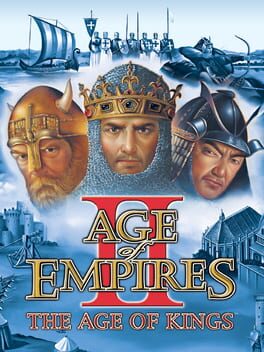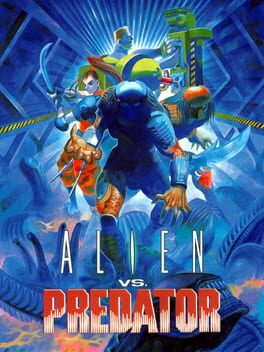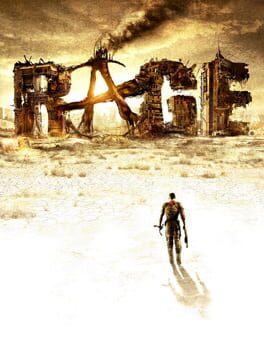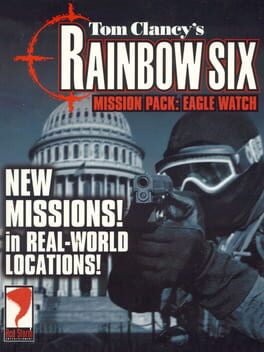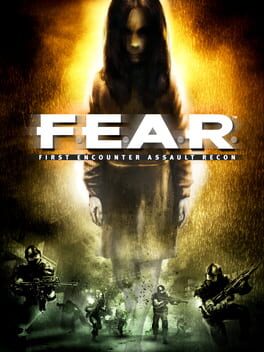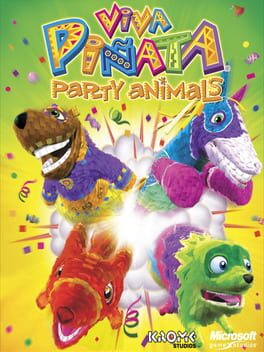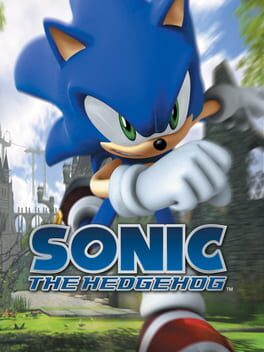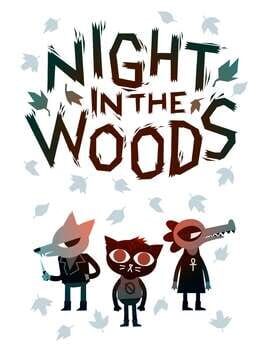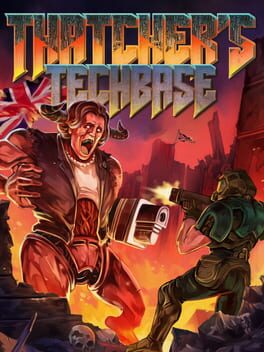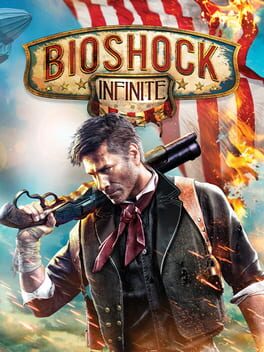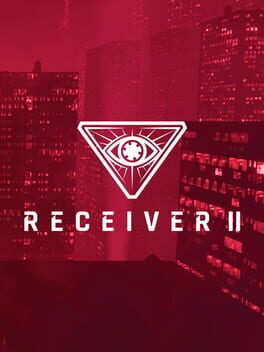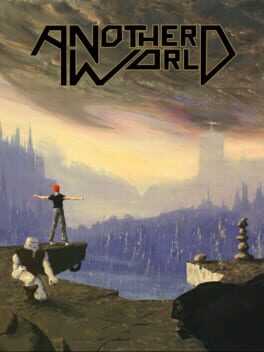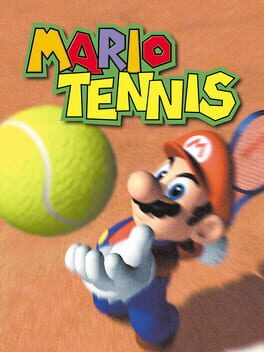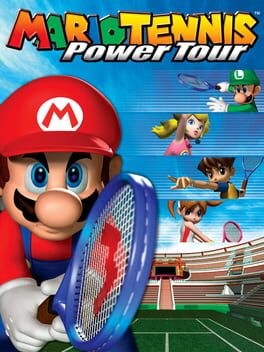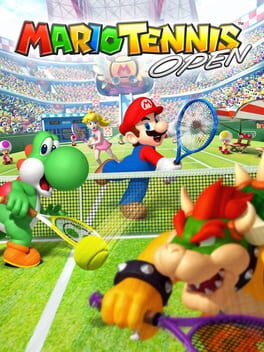123 reviews liked by Van
Took so long to put this out that the next update is already live, but I was writing this because I really gotta hand it to Mihoyo. Reading back my review for the game upon release I was obviously a hair away from shit talking this thing if I so much as sniffed that it was getting worse. The good news is that - generally speaking - that hasn't happened.
Don't get me wrong, they haven't all been base hits, but they've steadily improved on all the things I liked best about this game upon release. The characters are more interesting than they've ever been, and while I'll still object to the visual design of some of these characters (Jade? come on now), they've continually dropped characters with mechanics that make them genuinely fun to play despite sticking to the two-skills-per-character rule. I have more fun playing my tank than I've had playing most characters in other turn-based games.
I think I feel some obligation to be a little more moderate in my praise because I know plenty of people who will tell you that this is competing with the best games of the year, or that it's "the most generous gacha game", and while I don't think it's quite there yet for me, I can at least understand where a lot of the praise is coming from, because Hoyoverse aren't being lazy with this one. I've been surprised by the amount of times they've dropped a ridiculously high effort cutscene for a quest with virtually no impact on the main story, by the amount of minigames they've added, by the ways they use new enemy mechanics to switch things up, with the fact that the companion quests can tell stories that I found genuinely compelling. There's no "for a gacha game" here, my shock is solely because I recently gave Genshin Impact another spin and I just can't believe this is the same company. A lot of love has gone into this thing and as time goes on I'm only having more fun mixing and matching characters and farming up to improve new ones. The important note here is that I'm the person who will deliberately avoid levelling good characters to be different, so there's a lot of room for people to complain about a stale meta or what-have-you that I'm simply not capable of touching on.
I still think that there's too much to nitpick for this game to become one of the undeniable greats that converts the haters - the fact that there's a gacha here will always work against it, to point out the biggest issue - but I think there are hooks everywhere if you have any interest in finding them. I was unemployed for the past four months and still managed to snag multiple shiny new characters (with no resources saved up) so you shouldn't feel like you're being locked out of something special by keeping the wallet closed.
https://i.imgur.com/yTJ0wkT.png
Don't get me wrong, they haven't all been base hits, but they've steadily improved on all the things I liked best about this game upon release. The characters are more interesting than they've ever been, and while I'll still object to the visual design of some of these characters (Jade? come on now), they've continually dropped characters with mechanics that make them genuinely fun to play despite sticking to the two-skills-per-character rule. I have more fun playing my tank than I've had playing most characters in other turn-based games.
I think I feel some obligation to be a little more moderate in my praise because I know plenty of people who will tell you that this is competing with the best games of the year, or that it's "the most generous gacha game", and while I don't think it's quite there yet for me, I can at least understand where a lot of the praise is coming from, because Hoyoverse aren't being lazy with this one. I've been surprised by the amount of times they've dropped a ridiculously high effort cutscene for a quest with virtually no impact on the main story, by the amount of minigames they've added, by the ways they use new enemy mechanics to switch things up, with the fact that the companion quests can tell stories that I found genuinely compelling. There's no "for a gacha game" here, my shock is solely because I recently gave Genshin Impact another spin and I just can't believe this is the same company. A lot of love has gone into this thing and as time goes on I'm only having more fun mixing and matching characters and farming up to improve new ones. The important note here is that I'm the person who will deliberately avoid levelling good characters to be different, so there's a lot of room for people to complain about a stale meta or what-have-you that I'm simply not capable of touching on.
I still think that there's too much to nitpick for this game to become one of the undeniable greats that converts the haters - the fact that there's a gacha here will always work against it, to point out the biggest issue - but I think there are hooks everywhere if you have any interest in finding them. I was unemployed for the past four months and still managed to snag multiple shiny new characters (with no resources saved up) so you shouldn't feel like you're being locked out of something special by keeping the wallet closed.
https://i.imgur.com/yTJ0wkT.png
Vampire Survivors
2022
This is really a game that just constantly has you improving every few minutes so the urge to keep playing becomes dangerously high. There's no down times or pace-breaking story, it's just pure arcadey fun but with a huge progression chain, so unlike large amounts of arcade games you still feel like you're aiming for something beyond a high score.
It's actually quite impressive how much content there is (of course I am playing a few years into the games life). It looks very empty at first, only 4 characters? Then you unlock a new one and it brings up many more. Then you unlock a secret character and it shows all the other secret characters. You're constantly unlocking new weapons and stages, the former of which is always fun to try and experiment with and see what evolves with what. While most of the stages are fairly plain, there's some fun gimmicky ones, like the newly added minecart stage, a stage based on Green Hill Zone with blocks similar to the special stages in that game which break after a certain amount of hits etc.
There's a lot of player-selected difficulty and challenges to be made by turnign on and off certain settings - no matter how much you upgrade, there's always an option to turn it all off to play as if starting a brand new game. But at the same time you can break the game in half by working out how to effectively farm golden eggs to create a character so powerful nothing can even touch you.
I found out this was supposedly made by someone using gambling psychology, except of course without the whole debt part. I'd love to see more vices be made into things that don't have their downsides, how about video games without the extreme time loss? 🤭
I guess as far as issues go, there's not many bosses that really do anything. Most of them just float around like any other enemy and try to overlap with your sprite to take you out. Towards the endgame there's definitely a sense that progression has slowed down - you're just playing to play now. While there's still stuff to unlock, you've already discovered the perfect item combos and can make a build to get you through pretty much anything, so a new item is at best worth a try or two, but lacks that excitement you get early on.
Very fun and massive amount of content for its price. Also a pretty good soundtrack.
It's actually quite impressive how much content there is (of course I am playing a few years into the games life). It looks very empty at first, only 4 characters? Then you unlock a new one and it brings up many more. Then you unlock a secret character and it shows all the other secret characters. You're constantly unlocking new weapons and stages, the former of which is always fun to try and experiment with and see what evolves with what. While most of the stages are fairly plain, there's some fun gimmicky ones, like the newly added minecart stage, a stage based on Green Hill Zone with blocks similar to the special stages in that game which break after a certain amount of hits etc.
There's a lot of player-selected difficulty and challenges to be made by turnign on and off certain settings - no matter how much you upgrade, there's always an option to turn it all off to play as if starting a brand new game. But at the same time you can break the game in half by working out how to effectively farm golden eggs to create a character so powerful nothing can even touch you.
I found out this was supposedly made by someone using gambling psychology, except of course without the whole debt part. I'd love to see more vices be made into things that don't have their downsides, how about video games without the extreme time loss? 🤭
I guess as far as issues go, there's not many bosses that really do anything. Most of them just float around like any other enemy and try to overlap with your sprite to take you out. Towards the endgame there's definitely a sense that progression has slowed down - you're just playing to play now. While there's still stuff to unlock, you've already discovered the perfect item combos and can make a build to get you through pretty much anything, so a new item is at best worth a try or two, but lacks that excitement you get early on.
Very fun and massive amount of content for its price. Also a pretty good soundtrack.
Baldur's Gate 3
2023
Not particularly enamored with this one although I can certainly understand why many are, since it allows for those kinds of conversations that frequently feel impossible in 2023, the kind where you and your friends or coworkers come together to talk for hours about the choices you made at a particular juncture and what happens if you pick option C instead of option B, you know what I mean - conversations that are much rarer when a modern game's sense of mystery can be completely dispelled within 10 hours by front page reddit posts and scores of "articles" reducing each dialogue prompt to Baldur's Gate 3: How To Get THE BEST Companion Cutscenes. The #general chat in my Discord server has people I haven't spoken to in years coming out of the woodwork to talk about the results of character creation, about the companions they've romanced and killed, about all the ways their characters lost an eye, and they all seem pretty content with the breadth of discoveries that this game enables.
For my first 20 hours, I was basically the same - there's a lot of fun to be had in poking around these early areas with the horniest party of all time (despite that fact) and chatting with rats, cats, and dead guys. In these early chapters the game best supports my preferred playstyle: a big circuitous route around the map, looking at everything as I drive past but only stopping to drink deeply from a select few side stories. Push further into the main story, though, and find yourself woefully underleveled because you grew tired of these fights 10 hours ago. It's never so difficult as to completely block you from progressing, but it's easy to feel that your punishment for not seeking out each and every side quest is being forced to initiate every fight from the (admittedly cumbersome) stealth or spend the whole fight herding enemies into a big circle so you can use your Level 3 AOE Spell of choice to meme the encounters until they're finished. I have no experience with D&D or this particular ruleset aside from other video games, but the adherence to such a system and its limits are obvious when you spend forty hours playing this game just to unlock a single cast of a spell that these developers would've given you immediately in their last game. It's a pace that works pretty well for weekly tabletop adventures with a group of IRL friends, but feels a bit too slow and unrewarding when I'm sitting alone, staring at a menu of unappetizing "roll advantage"/"create difficult terrain" spells as a reward for my once-nightly level-up.
What's kept me playing are the settings and companions - the mind flayers are arguably the least interesting part of this whole deal, so while it sucks that the main plot so prominently revolves around them, the side quests are generally well-crafted enough that one or two of them would be a satisfying enough adventure to fill the entire night on their own. I do wish that the companions would Talk Normally for five minutes but they've done well enough in telling some of the companion stories (Gale is a particular standout) that they can create genuinely affecting moments if you look in the right places. Not all of them are told so well, and some of the companions feel deeply artificial as a result, but generally speaking I can understand why a player might recruit any given companion not named Lae'zel to their party. For the most part, I'm also fond of the party chatter - every once in a while you'll get a nice bit of banter that feels like the result of actual role-playing with friends, whether it's a joke or a short flavorful exchange revealing how two companions interact or a story that fleshes out someone's background. It's not as personal as it could be if it were your real friends bantering with you, but it's a fun approximation and it's deployed tastefully.
Ultimately my grade for the experience is a big ol' shrug and the word "Sure?" written exactly like so. I think the lipstick looks fantastic even if it fails to produce miracles for the pig that is 5th edition rules, with its awkward magic system and glacial level progression and a litany of boring buffs. Compared to the average person I'd be considered a "hater" of Divinity Original Sin 2 but it felt so colorful compared to this! I love killing bosses by shoving them into a pit as much as the next guy, but much of this experience feels like the developers are skillfully wringing every drop of charisma that they can from the source material and hoping that the player doesn't notice that "the chill druid left and now the mean druid is being mean, go fetch the chill druid" feels a little trite. I'll be doing my best to hit the end credits, but if I don't make it, know that I'm probably out there starting a new save on Tyranny instead.
For my first 20 hours, I was basically the same - there's a lot of fun to be had in poking around these early areas with the horniest party of all time (despite that fact) and chatting with rats, cats, and dead guys. In these early chapters the game best supports my preferred playstyle: a big circuitous route around the map, looking at everything as I drive past but only stopping to drink deeply from a select few side stories. Push further into the main story, though, and find yourself woefully underleveled because you grew tired of these fights 10 hours ago. It's never so difficult as to completely block you from progressing, but it's easy to feel that your punishment for not seeking out each and every side quest is being forced to initiate every fight from the (admittedly cumbersome) stealth or spend the whole fight herding enemies into a big circle so you can use your Level 3 AOE Spell of choice to meme the encounters until they're finished. I have no experience with D&D or this particular ruleset aside from other video games, but the adherence to such a system and its limits are obvious when you spend forty hours playing this game just to unlock a single cast of a spell that these developers would've given you immediately in their last game. It's a pace that works pretty well for weekly tabletop adventures with a group of IRL friends, but feels a bit too slow and unrewarding when I'm sitting alone, staring at a menu of unappetizing "roll advantage"/"create difficult terrain" spells as a reward for my once-nightly level-up.
What's kept me playing are the settings and companions - the mind flayers are arguably the least interesting part of this whole deal, so while it sucks that the main plot so prominently revolves around them, the side quests are generally well-crafted enough that one or two of them would be a satisfying enough adventure to fill the entire night on their own. I do wish that the companions would Talk Normally for five minutes but they've done well enough in telling some of the companion stories (Gale is a particular standout) that they can create genuinely affecting moments if you look in the right places. Not all of them are told so well, and some of the companions feel deeply artificial as a result, but generally speaking I can understand why a player might recruit any given companion not named Lae'zel to their party. For the most part, I'm also fond of the party chatter - every once in a while you'll get a nice bit of banter that feels like the result of actual role-playing with friends, whether it's a joke or a short flavorful exchange revealing how two companions interact or a story that fleshes out someone's background. It's not as personal as it could be if it were your real friends bantering with you, but it's a fun approximation and it's deployed tastefully.
Ultimately my grade for the experience is a big ol' shrug and the word "Sure?" written exactly like so. I think the lipstick looks fantastic even if it fails to produce miracles for the pig that is 5th edition rules, with its awkward magic system and glacial level progression and a litany of boring buffs. Compared to the average person I'd be considered a "hater" of Divinity Original Sin 2 but it felt so colorful compared to this! I love killing bosses by shoving them into a pit as much as the next guy, but much of this experience feels like the developers are skillfully wringing every drop of charisma that they can from the source material and hoping that the player doesn't notice that "the chill druid left and now the mean druid is being mean, go fetch the chill druid" feels a little trite. I'll be doing my best to hit the end credits, but if I don't make it, know that I'm probably out there starting a new save on Tyranny instead.
Hammerfight
2009
Anyone that had problems with this game was because they set their mouse DPI wrong. In the settings put it as low as possible. Although your mouse will be very fast in menus it will be acceptable in game.
If you do this, it becomes one of the most satisfying games you will play. Nothing beats beating the shit out of a ship with your huge hammer. I legit had a lot of fun playing this game while it lasted. Give this game a chance you might enjoy it but don't expect much.
If you do this, it becomes one of the most satisfying games you will play. Nothing beats beating the shit out of a ship with your huge hammer. I legit had a lot of fun playing this game while it lasted. Give this game a chance you might enjoy it but don't expect much.
Blue Archive
2021
Everhood
2021
It drives me insane when it comes to talking about these sorts of games since it always feels like a total minefield about how much I can say before I get into some pretty serious spoiler territory. It's especially the case when it comes to a game I find as cool as this one because it makes me all the more determined to insist on not contributing to the endless sea of spoilers that is the internet. With that said though, wow, what a great game, one that manages to walk that line perfectly between representing its influences prominently while also going for a style and approach that's wholly distinct and its own. It's a game that not only represents the inherent flaws in calling a game inspired by something else a "[blank] clone", but is also able to demonstrate the sheer versatility of games as an artform with how much variety and incredibly distinct characteristic there can be in even the most similar looking experience. I'd say that it also conveys that games shouldn't be so inherently opposed to stylistically following in the footsteps of others if they have something unique of their own to bring to the table, and this definitely has a lot of interesting stuff to say.
While one of the most popular summaries I've seen of this game falls somewhere along the line of "Undertale meets rhythm games", I'd argue that this is only true on the most superficial level both thematically and mechanically. In terms of mechanics, while there's clearly a rhythm game aesthetic that's intrinsically tied to this, with the enemies summoning obstacles in accordance to the music along with the arena you fight everyone in being reminiscent of a Guitar Hero chart, this is far closer to a bullet hell than it is a true rhythm game. This goes all the way to the point where there are some section that feel as if the player's actions are totally disconnected to the music going on, and while those who expected a proper rhythm game would probably find this an odd or downright terrible decision, it's something that becomes much easier to appreciate if you're able to take it as a very stylish bullet hell that's intrinsically linked to the soundtrack. It also helps that the combat itself feels so fun, with your character's movement being largely fast and very responsive, which is a must for a game that gets as chaotic and fast paced as this one. The way it's able to better represent the characters themselves and bring forth a lot of interesting mechanical challenges is also really neat.
Rarely does it feel as if two fights can be approached in a similar way, whether it's because of certain patterns forcing the player to act in a certain way, a type of obstacle unique to a certain fight, or even just in the more nuanced areas of how the player needs to respond to any given situation in front of them, almost every battle feels wholly unique and entertaining. The exception to this is when a certain element gets introduced about halfway into the game and throws some of the difficulty balancing a bit off, almost going against the core gameplay loop in the process, but fortunately the times which this additional element reveals its more negative connotations are relatively uncommon and are able to actually add to some of the best moments in the game. Overall, this element is a bit of a double edged sword but mostly works out well, so the bad points it brings to the table are largely an acceptable tradeoff. I also am a big fan of the way this game handles difficulty for the most part as well, having a really smooth difficulty curve at the start and getting absolutely brutal by the end, but also feeling as if it can get pretty interesting with things to further solidify the narrative side of things. Occasionally you'll just get put up against something that feels far beyond what everything else is, or uncharacteristically easy, but it always feels fitting from a narrative perspective and serves to strengthen the relationship between these combat sections and the overworld, reinforcing the way that these are 2 parts of the same world and not separate entities that only coexist for the sake of providing some more cohesion to the experience. At the same time, the devs also understand that putting in some optional superbosses is a really fun time and one that is able to transcend any semblance of such a difficulty curve to create some moments of pure insanity for those who are looking for the game's mechanics to be pushed to their absolute limits.
Cohesion on the whole is something that this game has a ton of in ways similar to this, which is surprising given how abstract and psychedelic it can often get. You have a bunch of these moments that go completely off the rails visually and yet, once you begin to better understand the game and its world, none of this ever feels entirely out of nowhere, it all has a reason to exist and is all integral to how the game functions. Being able to craft multiple encounters that reach incredible levels of flashiness and creativity in the way that this game does, all without sacrificing any part of its identity or feeling superfluous is one of its strongest characteristics from where I stand.
The abstract nature of Everhood's presentation is also very strong in the way it contributes to its surreal atmosphere along with some of its deeper narrative themes. The world feels so sparse, yet full of colour in a way that you never feel able to get a full grasp on the situation. It's hard to tell how happy a lot of these characters really are and how much they're merely trying to pass time in the endless expanse of nothingness that they live in. The more atmospheric approach to the world design here often also feels more reminiscent of games like Yume Nikki beyond anything else, which is a massive plus in my eyes, especially one that understands how to use the surreal, often nonsensical composition of the world to its benefit. Beyond the artstyle and vibe of some of the comedy, I really cannot say in good faith that this is an Undertale clone either, especially from a thematic standpoint and the way that while Undertale focused on the concept of humanising fictional entities and the player's relationship with their protagonist character, Everhood instead uses the medium to ponder more abstract concepts relating to the nature of existence itself. I was surprised with the way that this game would often reflect a lot of Buddhist ideologies about what life truly is, and what it means to exist, using an interactive medium to allow the audience to become further immersed in the world that was created in an attempt to allow them to more strongly question what the game was telling them. This also served to strengthen the moral dilemma that the player is then faced with, as while there is a "true ending" so to speak, it's not particularly black and white in what is considered the morally correct option, which can be seen both as a way to make the game feel less didactic on the whole, and also could be seen as representing the endlessly complex and nuanced nature of life itself.
Overall, Everhood is a game that subverts so many expectations and does so in a constantly engaging way. What might seem like something that wears its influences a bit too heavily on its sleeve to begin with quickly evolves into something wholly unique. There are so many idiosyncrasies present here, ranging from the intentionally sparse overworld being contrasted by these high octane, sensory overload inducing combat sequences, to the way that the game keeps itself so vague without feeling as if it's being contrived about it. Everhood is a careful balancing act that feels as if it could easily have fallen apart at every step of the way, yet rarely does so, and it's truly an amazing experience that I would recommend wholeheartedly. Don't be deterred by the game's surface level appearance, there's so much more to it.
While one of the most popular summaries I've seen of this game falls somewhere along the line of "Undertale meets rhythm games", I'd argue that this is only true on the most superficial level both thematically and mechanically. In terms of mechanics, while there's clearly a rhythm game aesthetic that's intrinsically tied to this, with the enemies summoning obstacles in accordance to the music along with the arena you fight everyone in being reminiscent of a Guitar Hero chart, this is far closer to a bullet hell than it is a true rhythm game. This goes all the way to the point where there are some section that feel as if the player's actions are totally disconnected to the music going on, and while those who expected a proper rhythm game would probably find this an odd or downright terrible decision, it's something that becomes much easier to appreciate if you're able to take it as a very stylish bullet hell that's intrinsically linked to the soundtrack. It also helps that the combat itself feels so fun, with your character's movement being largely fast and very responsive, which is a must for a game that gets as chaotic and fast paced as this one. The way it's able to better represent the characters themselves and bring forth a lot of interesting mechanical challenges is also really neat.
Rarely does it feel as if two fights can be approached in a similar way, whether it's because of certain patterns forcing the player to act in a certain way, a type of obstacle unique to a certain fight, or even just in the more nuanced areas of how the player needs to respond to any given situation in front of them, almost every battle feels wholly unique and entertaining. The exception to this is when a certain element gets introduced about halfway into the game and throws some of the difficulty balancing a bit off, almost going against the core gameplay loop in the process, but fortunately the times which this additional element reveals its more negative connotations are relatively uncommon and are able to actually add to some of the best moments in the game. Overall, this element is a bit of a double edged sword but mostly works out well, so the bad points it brings to the table are largely an acceptable tradeoff. I also am a big fan of the way this game handles difficulty for the most part as well, having a really smooth difficulty curve at the start and getting absolutely brutal by the end, but also feeling as if it can get pretty interesting with things to further solidify the narrative side of things. Occasionally you'll just get put up against something that feels far beyond what everything else is, or uncharacteristically easy, but it always feels fitting from a narrative perspective and serves to strengthen the relationship between these combat sections and the overworld, reinforcing the way that these are 2 parts of the same world and not separate entities that only coexist for the sake of providing some more cohesion to the experience. At the same time, the devs also understand that putting in some optional superbosses is a really fun time and one that is able to transcend any semblance of such a difficulty curve to create some moments of pure insanity for those who are looking for the game's mechanics to be pushed to their absolute limits.
Cohesion on the whole is something that this game has a ton of in ways similar to this, which is surprising given how abstract and psychedelic it can often get. You have a bunch of these moments that go completely off the rails visually and yet, once you begin to better understand the game and its world, none of this ever feels entirely out of nowhere, it all has a reason to exist and is all integral to how the game functions. Being able to craft multiple encounters that reach incredible levels of flashiness and creativity in the way that this game does, all without sacrificing any part of its identity or feeling superfluous is one of its strongest characteristics from where I stand.
The abstract nature of Everhood's presentation is also very strong in the way it contributes to its surreal atmosphere along with some of its deeper narrative themes. The world feels so sparse, yet full of colour in a way that you never feel able to get a full grasp on the situation. It's hard to tell how happy a lot of these characters really are and how much they're merely trying to pass time in the endless expanse of nothingness that they live in. The more atmospheric approach to the world design here often also feels more reminiscent of games like Yume Nikki beyond anything else, which is a massive plus in my eyes, especially one that understands how to use the surreal, often nonsensical composition of the world to its benefit. Beyond the artstyle and vibe of some of the comedy, I really cannot say in good faith that this is an Undertale clone either, especially from a thematic standpoint and the way that while Undertale focused on the concept of humanising fictional entities and the player's relationship with their protagonist character, Everhood instead uses the medium to ponder more abstract concepts relating to the nature of existence itself. I was surprised with the way that this game would often reflect a lot of Buddhist ideologies about what life truly is, and what it means to exist, using an interactive medium to allow the audience to become further immersed in the world that was created in an attempt to allow them to more strongly question what the game was telling them. This also served to strengthen the moral dilemma that the player is then faced with, as while there is a "true ending" so to speak, it's not particularly black and white in what is considered the morally correct option, which can be seen both as a way to make the game feel less didactic on the whole, and also could be seen as representing the endlessly complex and nuanced nature of life itself.
Overall, Everhood is a game that subverts so many expectations and does so in a constantly engaging way. What might seem like something that wears its influences a bit too heavily on its sleeve to begin with quickly evolves into something wholly unique. There are so many idiosyncrasies present here, ranging from the intentionally sparse overworld being contrasted by these high octane, sensory overload inducing combat sequences, to the way that the game keeps itself so vague without feeling as if it's being contrived about it. Everhood is a careful balancing act that feels as if it could easily have fallen apart at every step of the way, yet rarely does so, and it's truly an amazing experience that I would recommend wholeheartedly. Don't be deterred by the game's surface level appearance, there's so much more to it.
Only Up!
2023
Honestly decent parkour fun. Some of the best obbys in Roblox are still way superior to this but the differing climb mechanics felt unique enough. I fell about 6 times and beat the game in 115 minutes. Only big negatives is that its real scummy when some blocks near the top fall away when you touch them, i was fine since ive seen countless clips of people falling to that dastardly cheese. Still think that those falling ones ruin some of the skilled experience, especially on first runs.
Def a trend game as its not unique and uses ai voices, even i have thought about making an insane parkour game before that climbs up with no checkpoints..... although.... i would give the player better control and a less unreliable movement system. Its been done before too, even in Roblox. Have to give a thumbs up for its price and worth the try if its on sale.
Def a trend game as its not unique and uses ai voices, even i have thought about making an insane parkour game before that climbs up with no checkpoints..... although.... i would give the player better control and a less unreliable movement system. Its been done before too, even in Roblox. Have to give a thumbs up for its price and worth the try if its on sale.
What I normally don't enjoy about tactical games is how they make you take a defensive approach. I don't have the patience for cover-based shooters in general, whether they're turn-based or not. But this plays like the tactical equivalent of DOOM. Aggression is key, holding still will get you killed. It's a blast to utilize everyone's different abilities to find the best way to destroy your opponent fast, before they have a chance to get to you.
The Fantastic Game
2012
Fantasticaneer, I kneel before your offerings to the Egglike genre.
This is the game that started a cult genre called Egglikes, which are basically really weird walking sims where you collect stuff, do some platforming challenges of questionable quality, and encounter strange memes.
One of the major components of a Egglike is making sure the graphics look archaic enough without going overboard in making it look bad. The graphics of an Egglike aim to capture the feel of playing someone's first Unity project, mainly because that's what these probably are.
Fantasticaneer pioneered the Egglike genre with this game, The Fantastic Game. In this game, you explore an aimless world hunting for dollar bills. You'll explore weird areas, meet eggs that sing Smash Mouth's All Star, and more in this very short romp.
If you like janky first-person exploration-based platformers, The Fantastic Game is for you!
This is the game that started a cult genre called Egglikes, which are basically really weird walking sims where you collect stuff, do some platforming challenges of questionable quality, and encounter strange memes.
One of the major components of a Egglike is making sure the graphics look archaic enough without going overboard in making it look bad. The graphics of an Egglike aim to capture the feel of playing someone's first Unity project, mainly because that's what these probably are.
Fantasticaneer pioneered the Egglike genre with this game, The Fantastic Game. In this game, you explore an aimless world hunting for dollar bills. You'll explore weird areas, meet eggs that sing Smash Mouth's All Star, and more in this very short romp.
If you like janky first-person exploration-based platformers, The Fantastic Game is for you!
Pikmin 2
2004
9 lists liked by Van
by ludzu |
13 Games
by MrWarm |
15 Games
by MendelPalace |
159 Games
by Pangburn |
113 Games
by abri |
300 Games
by 87th |
19 Games
by Erato_Heti |
23 Games
by letshugbro |
57 Games
